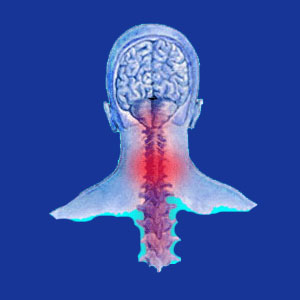
Cervical spine surgery describes operations that are performed on the neck, in an attempt to resolve problematic conditions that cause pain and possible neurological dysfunction.
There are many innovative types of surgical techniques and many different approaches to care for each variety of procedure. This is why finding the best type of neck surgery can be a very confusing and intimidating process for any patient who is considering surgical treatment of the cervical spine.
Doctors will typically recommend one or more of the variety of procedures that they offer, since each specializes in particular methods of cervical spine surgery. This can make the patient even more hesitant about making the wrong choice, since the procedural recommendation might be made exclusively on the grounds of financial motivations, rather than what is truly best for the patient.
This dissertation is geared towards assisting patients in better understanding the plethora of technical options that exist in the modern cervical spinal surgery arena.
Cervical Spine Surgery Procedures
In order to realize success from neck pain treatment, the diagnosis of the true underlying causative process must be valid and correct. Without achieving an accurate diagnosis, most patients will not recover, despite the most active and invasive care practices being applied.
Therefore, patients are always sternly warned to be 100% sure that their diagnosis is completely correct before even seriously considering a therapy that is as risky and damaging as neck surgery.
If the patient is satisfied that their doctor has everything right, and can successfully relieve their pain using surgical interventions, then these are the most common procedures to consider:
Discectomy, IDET and nucleoplasty are all ideal for treating symptomatic spinal disc herniations. Just remember that intervertebral abnormalities are quite normal and are rarely the exclusive cause of chronic pain. However, when the disc is truly pathological, minimally invasive versions of these techniques can bring about resolution of the symptoms almost immediately.
Corpectomy, foraminotomy and laminectomy are more invasive techniques that can be used to treat a wide range of problematic conditions, such as spinal stenosis, foraminal stenosis and mechanical pain syndromes enacted by significant spinal arthritis.
Facet joint procedures can remove painful osteophytes that interfere with proper spinal joint functionality.
Spinal fusion is used to treat virtually all types of neck and back pain. Fusion is usually reserved for cases wherein the spine is deemed to be unstable after surgical intervention. Fusion can be performed using completely organic materials, such as natural bone grafts. Fusion might also use bone substitutes to join vertebrae to one another. In many instances, reinforcing hardware is installed to strengthen the fusion. This hardware may be removed at a latter time or left in place permanently, depending on many case-specific factors.
Kyphoplasty and vertebroplasty surgeries can mend unstable fractures in the neck and resolve pain and some forms of spinal nerve and spinal cord impingement.
Nerve-focused surgeries do not resolve painful structural issues, but can bring lasting relief by temporarily or permanently disabling neurological tissues in the symptomatic region. Procedures such as rhizotomy, cryoanalgesia, neurotomy and radiofrequency ablation work to prevent painful nerves from transmitting signals to the brain, effectively ending symptoms, even if the causative condition remains untreated.
Cervical Spine Surgery Approaches
Regardless of what basic type of surgery is selected, there are almost always many technical variations available. These factors are extremely important to consider, since each has advantages and disadvantages that must be weighed carefully against specific patient treatment needs.
We always recommend finding the type of surgical technique that will be the least invasive and will involve the least degree of damage to the anatomical structures. This suggestion saves the patient from experiencing undue suffering and also helps facilitate a faster recovery, with less chance of experiencing serious complications.
Here are some of the variables that can be integrated into virtually any type of neck surgery:
The incision approach to the spine can be from the rear, from the side or from the front of the anatomy. Posterior placement of incisions will disturb the delicate muscular anatomy of the neck and take the longest time to recover from. Side and anterior approaches can spare muscular dissection and utilize the least invasive techniques to achieve the surgical goal.
Minimally invasive practices can be added to virtually any type of neck operation also. Using endoscopic, fiber-optic and laser technologies all allow doctors to minimize damage to healthy tissues. These effective surgical tools can also help to minimize infection and increase surgical precision.
Cervical Spinal Surgery Decisions
A great number of patients are referred to a surgeon when their pain becomes unresponsive to conservative care. It should be no surprise that the vast majority of surgeons will indeed recommend treating pain surgically, since this is the service they offer.
While we do hear that some patients are deemed poor candidates for surgery, and others are told to wait or avoid surgery altogether, most patients will be happily accepted for the most damaging therapies possible. This is true, regardless of the nature of the diagnosis, the illogicality of symptomatic correlation, the likelihood of providing a cure or the substantial risks of cervical surgeries.
If a surgical recommendation is accepted by the patient, then most will proceed right onto the operating table without further research or second opinion. This is shear madness. Spinal surgery is a major undertaking and the consequences of poor surgical outcomes can maim or kill.
Whether you subscribe to the surgical recommendation 100%, or whether you have some doubts, please do yourself a favor and learn more about your options before proceeding with any type of operation.
Talk to a few doctors who offer different variations on a surgical technique and find the very best approach to treating your specific condition, without exposing your body to unnecessary risk, injury or rehabilitative care.





